PROTESTING “BUTCHERS.” These children added their voices to those of about 20 adults who met with Dominion Energy officials on Sullivan’s Island last week to protest their vigorous practice of cutting tree limbs to protect power lines. Communities across the Lowcountry have been complaining more of late with James Island recently looking into requiring the company to have a certified arborist on hand to approve pruning. According to those at the Sullivan’s island meeting, which was attended by state and town officials, “Dominion representatives remained unmoved by our collective outrage and concerns over the butchering of our majestic live oaks and other trees, impact to the look and feel of our community and property values, the transfer of liability to the homeowner for beautifying trees after they leave, or the impact to our barrier island of losing the protection of strong oak trees during a hurricane. They refused to discuss any modifications to their processes to address our request to balance their legitimate safety objectives with our legitimate aesthetic and safety objectives.” Photo by Rob Byko.
IN THIS EDITION FOCUS, Campbell: Book on Emanuel shootings is important to read
FOCUS, Campbell: Book on Emanuel shootings is important to read
COMMENTARY, Brack: Take the high road and reject hate, fury
IN THE SPOTLIGHT: Titan Termite & Pest Control
PHOTO ESSAY: The murals of Montreal
GOOD NEWS: Big season ahead for Charleston Symphony Orchestra
FEEDBACK: Send us your letters
MYSTERY PHOTO: Rusty gate
S.C. ENCYCLOPEDIA: Santee National Wildlife Refuge
CALENDAR: From baseball to movies to jazz
FOCUSFOCUS, Campbell: Book on Emanuel shootings is important to read
A review by Reba Hull Campbell, special to Charleston Currents | Rarely does a book appeal to all my “reading” senses – well written, important message, compelling story and human connections. “Grace Will Lead Us Home” about the shootings at Emanuel A.M.E. Church was one of them.
Back in June, I listened to an interview on the SC Lede podcast on SC Public Radio with the author of the book, Jennifer Berry Hawes. She’s a reporter for The Post and Courier who witnessed first-hand many of the details surrounding this tragedy.
After hearing Hawes’ podcast, I knew I had to read the book. And I knew I had to buy it and not just borrow it from the library or listen on Audible. I had a feeling it would be one of those books I’d want to mark up and re-read.
Once I got started on the book, I just couldn’t stop. For anyone who thinks they have an understanding of the facts, the emotions, the complexities or the passions surrounding the shooting, the trial and its aftershocks, this book illustrates there’s far more to this story than just an accounting of facts in a series of news reports.
I was fully expecting this book to be written in the style of a reporter – all facts, little emotion, neutral descriptions that would pass a newspaper editor’s muster. That’s not the case at all. The best way I can describe the book is the intersection of excellent journalism and passionate, purposeful storytelling. I later learned that Hawes had won a Pulitzer Prize, so I shouldn’t have been surprised at the elegance of her writing in this book.
 What I discovered before I finished even the first two pages was a beautifully written story about an unimaginable human tragedy that affected people in ways we can’t possibly understand without being part of the story. That’s where Hawes’ writing comes in. She doesn’t just tell the story – she gently carries us into the story with a respectful, yet deeply insightful, narrative. She masterfully weaves together the lives and stories of the many people involved, while at the same time balances the issue of race relations that always simmers just below the surface.
What I discovered before I finished even the first two pages was a beautifully written story about an unimaginable human tragedy that affected people in ways we can’t possibly understand without being part of the story. That’s where Hawes’ writing comes in. She doesn’t just tell the story – she gently carries us into the story with a respectful, yet deeply insightful, narrative. She masterfully weaves together the lives and stories of the many people involved, while at the same time balances the issue of race relations that always simmers just below the surface.
There’s a sense of chronology in the way Hawes tells the story. However, the narrative doesn’t always run in order of what happened, which could make the book confusing if the writer had less finesse in the art of storytelling.
When I read writing by an author whose work really grabs me, I like to mark up the pages and go back and read those lines over and over. This book is now dog-eared with turned-down pages, numerous bookmarks and notes scribbled in the margins.
Here’s one of my favorite passages. In describing how blacks and whites viewed differently efforts toward improving race relations as a result of the shooting, Hawes writes, “White people saw their gestures of unity as gracious and sincere, which they often were. But black people saw them as more akin to someone who writes a thank you note after dinner when they really should have offered to pay.” Think about it. What a vivid analogy to describe the situation.
I also loved her account of Gov. Nikki Haley’s visit with Felicia Sanders, one of the survivors. Hawes vividly describes the emotion of the occasion merging perspectives of everyone who was present. I felt I was sitting in the room with them as a respectful observer rather than a voyeur or third-party reader of a news story.
Hawes describes without judgment, yet with more than just a reporter’s detachment, how the church leaders at Emanuel AME Church failed the survivors and victims’ families in several ways. Her descriptions are accurate and human-focused without being sappy or judgmental.
Hawes’ descriptions of the shooter’s family are humane but not accusatory. She digs into questions that anyone who had read anything about the shooter and his background would want to know. Yet she doesn’t sensationalize or hyperfocus on this part of the story.
She breaks down the complexities of the “forgiveness narrative” that started shortly after the shooting when several of the victims’ families made public statements offering forgiveness to the shooter. A reader can understand the individual stories of grace from various families’ “forgiveness narratives” to get past what Hawes called the “homogenous” descriptions that spread through the media.
There were a couple of things l learned from listening to the podcast interview before I read the book that made the story feel even more real and human than it would have if had I listened after I read it.
First was Hawes talking about her own personal connection to the story and how it impacted her family. One of these connections was the fact that her son’s school was across the street from Mother Emmanuel. In the podcast interview, she talked about personal “out of the blue” moments that grabbed her. One example was leaving her son at school and becoming overwhelmed with worry that something would happen – a worry that wouldn’t have crossed her mind before the shootings.
Second was how she described the history of race relations in South Carolina. On a personal level, I found the history lessons intertwined throughout the book forced me to examine my personal perspective on race. As she described the state of education in the 1970s and the “segregation academies” that dotted the state, I realized she was describing the school I attended. I had never heard the school referenced that way specifically, but found it jarring to hear those words used.
In the 1970s, I was in elementary school, living in a world pretty well insulated from the racial conflicts of school desegregation taking place around me. At that point, I didn’t fully understand that we were smack dab in the middle of in an era that was shaping our state’s future. Hawes’ history lessons overlaid throughout the book helped me better understand my own perspectives and the state of race relations today.
This book is a rare convergence of straightforward reporting and empathetic storytelling that fully held my attention — twice. I just finished reading it for the second time. It will make you think, cry, examine your own biases and feel more empathy for your fellow humans.
After more than 35 years working in politics, communications, management, fundraising and government relations, Reba Hull Campbell of Columbia is taking a gap year as a rookie retiree to figure out what she wants to be when she grows up. She is passionate about travel, writing, learning to play the uke and keyboard, and staying connected with old friends. Reba can be reached at rebahcampbell@gmail.com, @rebahcampbell on Instagram and Twitter, or through her blog at bit.ly/RandomConnectPoints
- Have a comment? Send to: editor@charlestoncurrents.com
BRACK: Take the high road and reject hate, fury

Alabama Gov. George Wallace and President Richard Nixon, February 1974. Credit: Wikipedia, via National Archives.
By Andy Brack, editor and publisher | One of the best things about vacationing in Quebec for the last week has been that we haven’t had to listen to people talk about Donald J. Trump.
 Most of the newspapers and television stations are in French, as is much of the conversation overheard while visiting interesting places in Montreal and in villages just north of the border with America.
Most of the newspapers and television stations are in French, as is much of the conversation overheard while visiting interesting places in Montreal and in villages just north of the border with America.
But some of the tension gripping the United States slipped in, thanks to the ubiquitous nature of social media. This includes two of the most gripping opinion pieces we’ve read in months.
First came The Baltimore Sun’s defense of its city after the president attacked it for being infested with rats. Even South Carolina’s GOP U.S. Sen. Tim Scott seemed to think Trump went too far, telling The State newspaper, “I think anytime you leave the impression, intended or not, that you’re targeting vulnerable people, I say, ‘God have mercy on the party.’”
But The Sun should win a Pulitzer Prize for its unblanched look at a presidency marked more by insult than any iota of decency. Here’s an excerpt from “Better to have a few rats than to be one:”
“Finally, while we would not sink to name-calling in the Trumpian manner — or ruefully point out that he failed to spell the congressman’s name correctly (it’s [Rep. Elijah] Cummings, not Cumming) — we would tell the most dishonest man to ever occupy the Oval Office, the mocker of war heroes, the gleeful grabber of women’s private parts, the serial bankrupter of businesses, the useful idiot of Vladimir Putin and the guy who insisted there are “good people” among murderous neo-Nazis that he’s still not fooling most Americans into believing he’s even slightly competent in his current post. Or that he possesses a scintilla of integrity. Better to have some vermin living in your neighborhood than to be one.”
And if you thought that was explosive, turn South to Alabama, where columnist John Archibald talked with a daughter of former Gov. George Wallace, whose race-based 1968 and 1972 presidential campaigns have parallels to the rhetoric coming from Trump’s White House. In a July 31 commentary headlined, “George Wallace’s daughter: ‘I’ve never seen anything like it,’” Archibald describes how Peggy Wallace Kennedy said as a child, she didn’t understand the hate and vitriol of her father’s national campaigns.
“She understands now,” Archibald wrote. “She understands all too well. Her father was wrong. ‘We cannot go backward,’ she told a group of teachers at the Birmingham Public Library last week. ‘We have to go forward.’”
Wallace Kennedy, who has a book coming out later this year about dealing with her father’s legacy, did not mention Trump, Archibald wrote. But in the column, she said the nation’s political throes a look a lot like what happened in her world in the 1960s.
“Each of us individually need to act with compassion and pray for our democracy. I hope we don’t go back. But it looks like where we are slipping … that seems to be where the top is taking us. … I’ve never seen anything like it. I saw Daddy a lot in 2016.”
The escalating, hate-filled rhetoric spewed by today’s president isn’t going to diminish. It might calm down for a few days here, a few days there. But the language of fear will continue to rise because, as Archibald wrote, it works: “Fanning the flames of fury works on crowds way better than policy solutions or wonkish approaches to governmental reform. Play on the resentments and you never have to get too deep into answers.”
For America to end this McCarthy-esque era of bullying, lying and rage, Democrats will have to do more than fiddle along the 2020 campaign trail. They will have to exile wishy-washiness from their modus operandi. They can’t base their campaigns only on being against Trump.
In short, they have to be FOR something big. They have to promote better opportunities for all Americans so that we can earn more economically and heal as a society.
They’ve got a few months to figure it out. And if they don’t, look for the fire hydrants of hate and racism to continue and for people to look seriously at moving to places like Quebec.
Andy Brack’s new book, “We Can Do Better, South Carolina,” is now available for $14.99 in paperback via Amazon.
- Have a comment? Send to: editor@charlestoncurrents.com
SPOTLIGHT: Titan Termite & Pest Control
 Titan Termite & Pest Control, headquartered in Charleston, is a full service residential, commercial and industrial pest control company serving South Carolina. It is a third-generation, family-owned company known for outstanding customer service. Each associate is dedicated to the customer and exhibits integrity and respect. Titan’s pest professionals can assist your commercial or residential location with general pest control, termite inspections, termite control, flea control, bed bug extermination, ant control and more. Titan Termite and Pest Control continues to set high standards so that its customers receive the best possible service. Titan’s technicians are knowledgeable of the latest in pest control techniques, which enables the company to customize effective treatment plans for every situation.
Titan Termite & Pest Control, headquartered in Charleston, is a full service residential, commercial and industrial pest control company serving South Carolina. It is a third-generation, family-owned company known for outstanding customer service. Each associate is dedicated to the customer and exhibits integrity and respect. Titan’s pest professionals can assist your commercial or residential location with general pest control, termite inspections, termite control, flea control, bed bug extermination, ant control and more. Titan Termite and Pest Control continues to set high standards so that its customers receive the best possible service. Titan’s technicians are knowledgeable of the latest in pest control techniques, which enables the company to customize effective treatment plans for every situation.
- Free estimate: 888-794-5603.
- Contact Titan online.
- To meet all of our underwriters, click here.
PHOTO ESSAY
The murals of Montreal
By Andy Brack, editor and publisher | The unexpected delights of a recent vacation to Canada were the murals that flourished around Montreal.
According to the city’s tourism website, “street art has become one of Montréal’s core visual identities over the last couple of decades, thanks to the marks left all over the city by intrepid artists like Omen, Bonar, Zïlon, Roadsworth, Chris Dyer, Kevin Ledo, Jason Botkin, the HVW8 and En Masse collectives and so many more. Now with two annual graffiti festivals, one of international renown, there’s something to see on virtually every block.”
We particularly enjoyed the neighborhood near the city’s namesake, Le Plateau-Mont-Réal, where color and intensity smacked you in the face as you were walking, shopping and digesting the vibrancy of the city. Here are some of the delights we saw:
- Next week: The skinny churches of the Eastern Townships
Big season ahead for Charleston Symphony Orchestra
Staff reports | Single tickets for the Charleston Symphony Orchestra’s 2019-20 season, which will celebrate the 350th founding of Charleston, are now available for purchase.
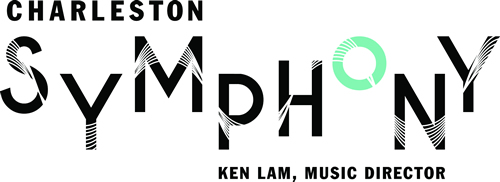 ”Be it through the powerful words of Abraham Lincoln set to music by Aaron Copland, the joyous rekindling of Gullah tradition by Ranky Tanky, or a brand new interpretation of Charleston’s history by composer Edward Hart, this season’s programming is intended to help you contemplate what growth and progress—as an individual as well as a community—mean to you,” said CSO Executive Director Michael Smith in a press release.
”Be it through the powerful words of Abraham Lincoln set to music by Aaron Copland, the joyous rekindling of Gullah tradition by Ranky Tanky, or a brand new interpretation of Charleston’s history by composer Edward Hart, this season’s programming is intended to help you contemplate what growth and progress—as an individual as well as a community—mean to you,” said CSO Executive Director Michael Smith in a press release.
The CSO season finale in April 2020, “Charleston And The New World,” will be the official kick off the City of Charleston’s 350th anniversary celebration. Here’s the full schedule of the CSO’s performance schedule, including Masterworks, Pops, chamber music and other special performances:
- Masterworks Season Premiere – Mozart In The Lowcountry: Sept. 27 and 28, 2019
- Pops Season Premiere – Music of the Movies:, 2019
- Masterworks – Pictures At An Exhibition: 25 and 26, 2019
- Chamber – We’ll Always Have Paris: Nov. 15 and 16, 2019
- Masterworks – Rach 2: Nov. 22 and 23, 2019
- Chamber – Holiday Strings: Dec. 6 and 7, 2019
- Special – Holy City Messiah: Dec. 12, 14, 15, 2019
- Pops – Holiday Pops: Dec. 20 and 21, 2019
- Masterworks – Bach’s Brandenburg: Jan. 10 and 11, 2020
- Pops – From Russia With Love: Jan. 23, 2020
- Masterworks – Conrad Tao Plays Brahms: Feb. 7 and 8, 2020
- Special – Magnetic South: Feb. 20, 2020
- Masterworks – Scheherazade: Feb. 28 and 29, 2020
- Pops – Ranky Tanky With The CSO: March 12, 2020
- Masterworks – Mendelssohn’s Scottish Symphony: March 27 and 28, 2020
- Chamber – All Roads Lead to Vienna: April 4 and 5, 2020
- Masterworks – Charleston And The New World: April 17 and 18, 2020
To purchase tickets for any of the CSO’s concerts, visit CharlestonSymphony.org, call the CSO box office at 843-723-7528 ext. 110, or visit in person at 2133 N. Hillside Drive, Charleston, SC 29407 between 9:00am and 5:00pm Monday through Thursday and 9:00am and 12:00pm on Friday.
In other Good News:
Photo contest. You can win a 2020 Fort Moultrie annual pass by submitting up to five photos of Fort Moultrie during the Aug. 18 to Sept. 8 contest period. The park superintendent will select the top four images and the public will be able to vote on their favorite image through social media or in person at the park through Sept. 28.
Requirements: Submitted images must be high-resolution of 300 dpi or higher and represent the natural and/or cultural history of Fort Moultrie. Both professional and non-professional images will be accepted. Images that do not meet the use requirements will not be considered. Photo submissions should be emailed to fosu_information@nps.gov with the subject line “2020 Fort Moultrie Annual Pass Photo Contest.” Please be sure to include your name, contact phone, email, and address. The winning photographer must give the National Park Service permission to use the winning image on the pass and promotion materials in support of park programming.
The Fort Moultrie annual pass allows the passholder and up to three adults with them free entrance to the Fort Moultrie site. For more information on park news, events and programs, follow us on Facebook athttps://www.facebook.com/FtSumterNPS/ and www.facebook.com/PinckneyNPS.
Carbon emissions drop in S.C. South Carolina has seen a 33 percent decrease among utility emissions, according to a new report by the Southern Alliance for Clean Energy. As reported by Statehouse Report correspondent Lindsay Street, the report also found the Southeast U.S. has seen a 28 percent decrease in carbon dioxide emissions from the generation of electricity over the last decade. Learn more about the issue.
FEEDBACKSend us your thoughts
We’d love to get your impact in one or more ways:
Send us a letter: We love hearing from readers. Comments are limited to 250 words or less. Please include your name and contact information. Send your letters to: editor@charlestoncurrents.com. | Read our feedback policy.
Tell us what you love about the Lowcountry. Send a short comment – 100 words to 150 words – that describes something you really enjoy about the Lowcountry. It can be big or small. It can be a place, a thing or something you see. It might the bakery where you get a morning croissant or a business or government entity doing a good job. We’ll highlight your entry in a coming issue of Charleston Currents. We look forward to hearing from you.
MYSTERYRusty gate
If you live in Charleston County, you’ve probably driven by this rusty gate at some point. What and where is it? Send your guess to editor@charlestoncurrents.com. And don’t forget to include your name and the town in which you live.
Our previous Mystery Photo
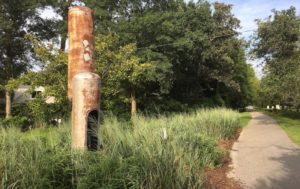 Our July 22 mystery, “Space-rockety sculpture,” was a little odd and hard to identify. But some intrepid souls — most of whom probably drove by it at one point in time — knew it to be a propane tank sculpture along the West Ashley Greenway.
Our July 22 mystery, “Space-rockety sculpture,” was a little odd and hard to identify. But some intrepid souls — most of whom probably drove by it at one point in time — knew it to be a propane tank sculpture along the West Ashley Greenway.
Kudos and a space-age salute to these sleuths who identified the sculpture: Evan D. Cook of James Island; Doug MacIntyre of Charleston; Chris Brooks of Mount Pleasant; Kristina Wheeler and Martha Beck of West Ashley; and Jay Altman of Columbia.
Wheeler, who is the natural history interpretation specialist for the Charleston County Parks and Recreation Commission, shared this: “I bike by this on my way to the Windermere Plaza. The Charleston Parks Conservancy brought this temporary art installation by Georgia artist Mike Wsol to the West Ashley Greenway. It was installed on May 8 near the St. Andrew’s School of Math and Science between Campbell Drive and the Greenway.”
Altman told us that the sculpture, titled “Under Glass” will be on display until October.
- Send us a mystery: If you have a photo that you believe will stump readers, send it along (but make sure to tell us what it is because it may stump us too!) Send it along to editor@charlestoncurrents.com.
HISTORY: Santee National Wildlife Refuge
S.C. Encyclopedia | Established in 1942, Santee National Wildlife Refuge (NWR) was created to alleviate the loss of natural waterfowl and wildlife habitat caused by the construction of hydroelectric projects on the Santee and Cooper Rivers. Management and protection are provided for 15,095 acres that stretch for eighteen miles along the northern shore of Lake Marion in Clarendon County.
The area includes more than ten thousand acres of open water and freshwater marsh along with mixed hardwoods and pines, croplands, old fields, ponds, and managed impoundments. Significant waterfowl concentrations winter on the refuge, as do other birds of interest. Santee Refuge overwinters the largest group of Canada geese belonging to the Southern James Bay population in South Carolina. With recorded observations of 296 species, the refuge is one of the best inland birding areas in the state.
Santee NWR includes four units, each with its own unique characteristics. The Bluff Unit is home to the Santee Indian Mound, which dates back more than 3,500 years. The mound is also the site of Fort Watson, which was an important British encampment during the Revolutionary War. Dingle Pond is home to a Carolina bay and provides unique habitat for several wetland species including alligators, wood ducks, mallards, great blue herons, and other wading and songbirds. Pine Island provides protection and habitat for American alligators, numerous species of wading birds, and nesting bald eagles and is home to thousands of wintering ducks, geese, and swans. The Cuddo Unit includes mixed hardwood and pine woodlands, numerous freshwater impoundments and marshes, and several old-field and cropland sites. Bird life is abundant, as are alligators and many other native species.
Santee NWR promotes conservation and stewardship by providing wildlife-dependent recreational opportunities and offers environmental education programs. Interpretive exhibits in the visitors’ center provide an orientation to the refuge. Visitors can explore the refuge on several miles of hiking trails or on an auto drive. Fishing and hunting are permitted during designated seasons in accordance with special refuge regulations.
— Excerpted from an entry by Kay W. McCutcheon. This entry may not have been updated since 2006. To read more about this or 2,000 other entries about South Carolina, check out The South Carolina Encyclopedia, published in 2006 by USC Press. (Information used by permission.)
ON THE CALENDARCALENDAR: From baseball to movies to jazz
![]() RiverDogs baseball: 7:05 p.m., Aug. 5 and Aug. 6 against Delmarva. The Dogs will be back in town Aug. 12 for a three-game series with Columbia. More info: RiverDogs.com.
RiverDogs baseball: 7:05 p.m., Aug. 5 and Aug. 6 against Delmarva. The Dogs will be back in town Aug. 12 for a three-game series with Columbia. More info: RiverDogs.com.
Starlight Cinema: 8:30 p.m., every Wednesday until Aug. 21, Freshfields Village, 149 Village Green Lane, Kiawah Island. Check out a free outdoor movie in the weeks ahead: Aug. 7: Christopher Robin; Aug. 14: Coco; and Aug. 21: Lego Movie 2: The Second Part.
Events at the Gaillard. Check out these awesome coming events at the Charleston Gaillard Center, 95 Calhoun St., Charleston:
- Homeless to Hope Fund Benefit: 6:30 p.m., Aug. 25. Join Charleston Mayor John Tecklenburg and Mount Pleasant Mayor Will Haynie for an uplifting musical celebration in support of the Homeless to Hope Fund. Entertainment line-up includes the Blue Dogs, soulful vocalist Zandrina Dunning and BlackNoyze Band, percussive Americana Rock band Rene Russell and the Bottom End and singers from the College of Charleston Choir, Charleston Symphony Chorus and Taylor Festival Choir under the direction of Dr. Rob Taylor. Tickets are $33 to $253.
- Lowcountry Jazz Fest: Aug. 30 to Sept. 1, The All White Party Affair, set for Aug. 30 from 7:30 p.m. to 11 p.m., will feature Grammy-nominated soul slinger Anthony David. Tickets are $85. The next evening at 7:30 p.m. is Day One of the festival, which will include several artists: The Sax Pack. Richard Elliott, Peter White, Keiko Matsui, DW3 and the West Coast Jam Horns. Tickets are $68 to $153. At 7:30 p.m. Sept. 1, Day Two starts including Dave Koz and Friends Summer Horns with Gerald Albright, Rick Braun, Kenny Lattimore and Aubrey Logan; Marion Meadows; Kirk Whalum; and Jonathan Butler. Tickets are $68 to $153.
Early morning bird walks at Caw: 8:30 a.m. every Wednesday and Saturday, Caw Interpretive Center, Ravenel. You can learn about habitats and birds, butterflies and other organisms in this two-hour session. Registration is not required, but participants are to be 15 and up. $10 per person or free to Gold Pass holders. More: http://www.CharlestonCountyParks.com.
AREA MARKETS
TUESDAYS. The Mount Pleasant Farmers Market is every Tuesday from 3:30 p.m. to 7 p.m. at the market pavilion at Moultrie Middle School, 645 Coleman Blvd., Mount Pleasant. Free parking. Lots of activities. More info.
WEDNESDAYS. The West Ashley Farmers Market is every Wednesday from 3 p.m. to 7 p.m. in Ackerman Park off Sycamore Avenue in West Ashley. The last week of the market will be the first week of October. More.
FRIDAYS/SATURDAYS: Night Market. Every Friday and Saturday from 6:30 p.m. to 10:30 p.m. for the rest of the year, you can shop with 108 vendors, including artists and craftsmen, at the night market on Market Street between East Bay and Church streets. It’s more than four blocks of local shopping and fun. Free.
SATURDAYS: Johns Island Farmers Market operates each Saturday from 9:30 a.m. to 1:30 p.m. year-round with more than 50 local farmers and vendors, food trucks, music and more. The market is located on the campus of Charleston Collegiate School, 2024 Academy Road, Johns Island
SATURDAYS: The Charleston Farmers Market is open 8 a.m. to 2 p.m. in Marion Square each Saturday through Nov. 30. More info.
- If you have an event to list on our calendar, please send it to feedback@charlestoncurrents.com for consideration. The calendar is updated weekly on Mondays.
 If you like what you’ve been reading, how about considering a contribution so that we can continue to provide you with good news about Charleston and the Lowcountry. Interested? Just click the image below.
If you like what you’ve been reading, how about considering a contribution so that we can continue to provide you with good news about Charleston and the Lowcountry. Interested? Just click the image below.
OUR UNDERWRITERS
Charleston Currents is an underwriter-supported weekly online journal of good news about the Charleston area and Lowcountry of South Carolina.
- Meet our underwriters
- To learn more about how your organization or business can benefit, click here to contact us. Or give us a holler on the phone at: 843.670.3996.
OUR TEAM
Charleston Currents offers insightful community comment and good news on events each week. It cuts through the information clutter to offer the best of what’s happening locally.
- Mailing address: O. Box. 22261 | Charleston, SC 29413
- Phone: 670.3996
Charleston Currents is provided to you weekly by:
- Editor and publisher: Andy Brack, 843.670.3996
- Contributing editor, common good, Fred Palm
- Contributing editor, money: Kyra Morris
- Contributing editor, Palmetto Poem: Marjory Wentworth
- Contributing editor, real estate: Digit Matheny
- Contributing editor, AT: Jerry Adams
- Contributing photographer: Rob Byko
SUBSCRIBE FOR FREE
Subscriptions to Charleston Currents are free.
- Click here to subscribe.
- We don’t want to lose you as a reader of Charleston Currents, but if you must unsubscribe, you will have to do it through the email edition you receive. Just go to the bottom of any of your weekly newsletters and click the “unsubscribe” function. If that doesn’t work, please send us an email with the word “unsubscribe” in the subject line.
- © 2008-2019, Statehouse Report, LLC. All rights reserved. Charleston Currents is published every Monday by Statehouse Report LLC, PO Box 22261, Charleston, SC 29413.



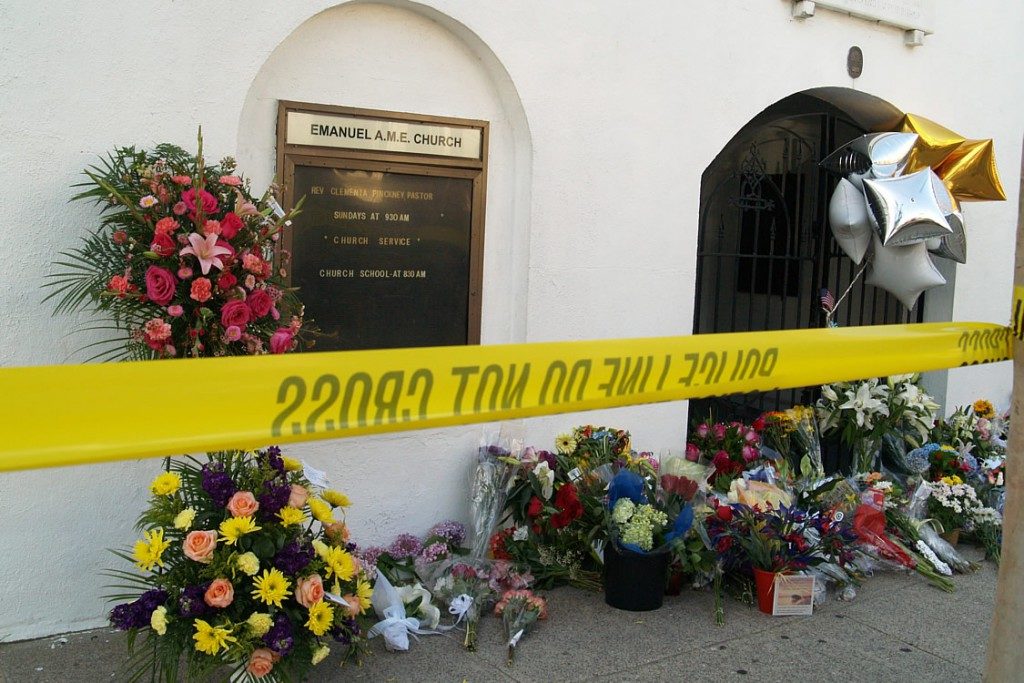



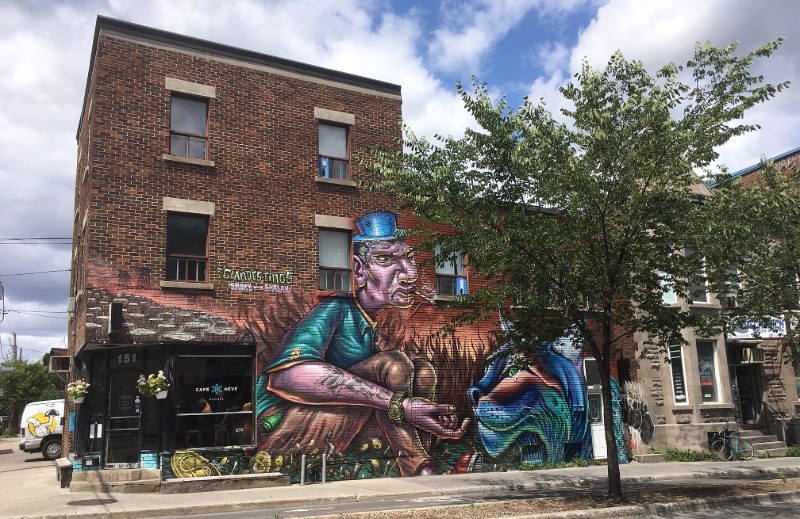

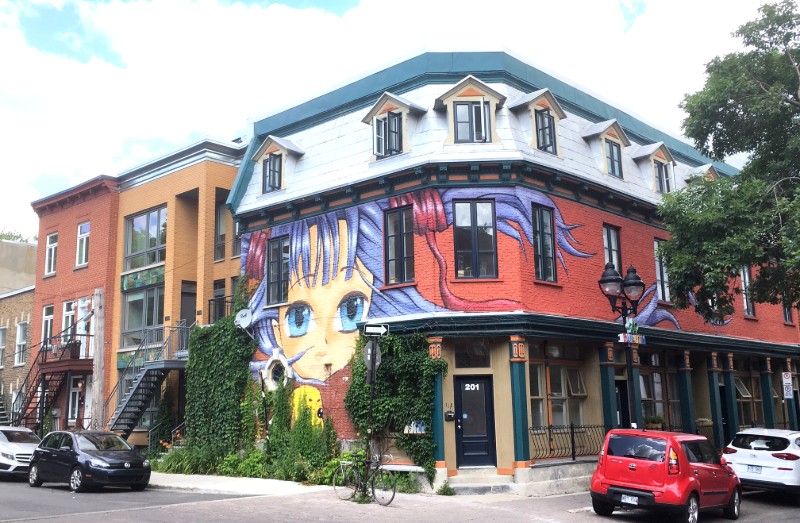







 We Can Do Better, South Carolina!
We Can Do Better, South Carolina!























